-
History & Society
- Education in Pre-war Hong Kong
- History of Taikoo Sugar Refinery
- Hong Kong Products Exhibition
- Local Festivals Around the Year
- Post-war Industries
- Pre-war Industry
- The Hong Kong Jockey Club Archives
- Tin Hau Festival
- Memories We Share: Hong Kong in the 1960s and 1970s
- History in Miniature: The 150th Anniversary of Stamp Issuance in Hong Kong
- A Partnership with the People: KAAA and Post-war Agricultural Hong Kong
- The Oral Legacies (I) - Intangible Cultural Heritage of Hong Kong
- Hong Kong Currency
- Hong Kong, Benevolent City: Tung Wah and the Growth of Chinese Communities
- The Oral Legacies Series II: the Representative List of the Intangible Cultural Heritage of Hong Kong
- Braving the Storm: Hong Kong under Japanese Occupation
- A Century of Fashion: Hong Kong Cheongsam Story
Geography & EnvironmentArt & Culture- Calendar Posters of Kwan Wai-nung
- Festival of Hong Kong
- Ho Sau: Poetic Photography of Daily Life
- Hong Kong Cemetery
- Sketches by Kong Kai-ming
- The Culture of Bamboo Scaffolding
- The Legend of Silk and Wood: A Hong Kong Qin Story
- Journeys of Leung Ping Kwan
- From Soya Bean Milk To Pu'er Tea
- Applauding Hong Kong Pop Legend: Roman Tam
- 他 FASHION 傳奇 EDDIE LAU 她 IMAGE 百變 劉培基
- A Eulogy of Hong Kong Landscape in Painting: The Art of Huang Bore
- Imprint of the Heart: Artistic Journey of Huang Xinbo
- Porcelain and Painting
- A Voice for the Ages, a Master of his Art – A Tribute to Lam Kar Sing
- Memories of Renowned Lyricist: Richard Lam Chun Keung's Manuscripts
- Seal Carving in Lingnan
- Literary Giant - Jin Yong and Louis Cha
-
History & SocietyGeography & EnvironmentArt & Culture
-
View Oral History RecordsFeatured StoriesAbout Hong Kong Voices
-
Hong Kong Memory
- Collection
- All Items
- Oral History
Recently VisitedOral History
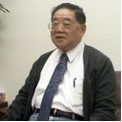
- The decline of Hong Kong textile industry
After the 1970s, Taiwan and Korea started to develop their spinning industries which posed competition to Hong Kong's spinners. The land where the spinners sat became more valuable which also attracted the owners to sell their land for profits. Spinning is a capital intensive industry. Most of the spinners need to have their own factories, which need dust and air-conditioning facilities. This makes it a costly exercise if the factory needs to move from one location to another. Central Textiles' factory in Zhanjiang only measured to 20,000 spindles, which worried Cheng as he was afraid it cannot withstand the competition from other mainland spinners in the long run.
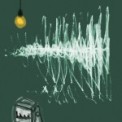
- The development of textile industry in Hong Kong. Early development of Globe Dyeing Factory Ltd.
The textile industry was first developed in Europe and USA, followed by Japan. Industries in Japan were strong, with good management culture and awareness. Goods were delivered on time and quality was good. These contributed to the rapid development of its society. After Japan, Hong Kong also started its textile industry, which spread to Taiwan and South Korea. During the 1960s, knitters dominated the local textile industry. Ha and his business partner started a small dyeing factory in Castle Peak Road. It started with dyeing business. They then bought machines and expanded to knitting synthetic fabrics because the manufacturing process was not difficult and easier for them to manage. As newer and more diverse fabrics became more complicated to produce, manufacturers needed to raise capital regularly to catch up on new facilities and new market. Money was also needed for expanding factories and updating machines. How to raise capital became an important aspect of the manufacturing industries.
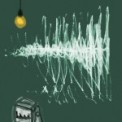
- History of the textile industry in Post-War Hong Kong. Pioneers of Hong Kong textile industry.
Hong Kong's textile industry first started with mainly weaving factories, as the technology required was introduced here quite early. Dyeing technology also had a significant impact on textile industry. The progress made in chemical dye technology also drove the Hong Kong textile industry to change. In the earlier days, chemical dyes were imported from Europe. Yu Kam Kei's Cheung Wah Ho Dyestuffs Company and another agent Wing Wah Company were in the business of importing dyes and they made considerable profits. After the war, spinning became the major component of the local textile industry.During the 1940s, many Shanghainese entrepreneurs moved to Hong Kong after the liberation of China.They contributed to the development of the spinning industry here.Nan Fung Mill was such example. The company owned a lot of land for its factories. It later on became a listed company as a property developer. Other pioneers in the spinning business were TAL Group's Li Zhen Zhi; Winsor Industrial's Chou Wen Hsien and Peninsula Knitters Ltd's Tang Hsiang Chien. Pioneers in weaving were Lim Por-Yen of Lai Sun Garment which was in weaving and his wife U Po-chu's Bo Ngai Company which was in knitting business; Yangtzekiang Garment Ltd's Chan Sui-kau who started his company with weaving and knitting, and Esquel Group's Yang Yuan Lung who started at TAL Group but later developed his own business. And those in knitting were Law's Textile Industrial Ltd's Law Ting Pong who was in knitwear and knitting; Lap Shun Textiles's Law Siu Lun; Unison Knitting Factory's Ng Chong and Unitex Ltd's Chan Fok Hei.
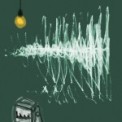
- Development of Hong Kong-made woven, knitted and woolen products.
Comparison of woven and knitted products. Local textile industry started with weaving business. It had a longer development while the development of knitting was shorter. There were pros and cons of both weaving and knitting. Weaving was a mass production industry, while knitting one could produce in a smaller quantity. Knitting could produce more diverse products, with sportswear and casual wear were popular among female and children. Woven wool fabric was part of the knitting business, with similar technology. In terms of warmth protection, modern technology has rendered both knitted and woven wool fabrics equally good, thus knitted fabrics have taken over wool's market place and drove down the demand of wool products. These days woven wool business is in its decline. Weaving used to be the major component of the textile industry but its importance has been taken over by knitting.
Heyday of wool industry. Wool weaving started in the 1960s, with its most robust period in the 1980s to 1990s. Consumers used woven wool products as decorative items, such as shawls. Law's Textile founded by Law Ting Pong and Crystal Group founded by his eldest son Kenneth Lo were both large knitting and woven wool manufacturers. Since it took a long time for making profits from textile industry, some factory owners left woven wool manufacturing to other businesses. For instance, Jimmy Lai who used to be in woven wool manufacturing, left the industry and started his magazines and newspapers instead.
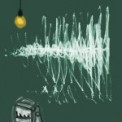
- Hong Kong's knitting factories started from small. Larger factories hold export quota. Sales netw...
Hong Kong's large knitters started from the scratch. For instance, Texwinca Holdings Ltd started in knitting and then expanded into dyeing. It also runs Baleno which was responsible for retailing. On the other hand, Fountain Set (Holdings) Ltd started in dyeing and then expanded to knitting. Those large corporations which have vertical set-up were Unitex Limited (founded by Chan Fok Hei), Unison Knitting Factory (founded by Ng Chong), TAL Group (founded by Li Zhen Zhi), Esquel Group (founded by Yang Yuan Lung), Crystal Group (founded by Kenneth Lo) and Lap Shun Textile (founded by Law Siu Lun), etc.
These big companies held a few 100,000 export quota on knitting products. Fountain Set specialized in processing for local garment manufacturers and did not export directly to the US so it had no export quota for its knitted products. Fabric export did not need any quota. So Fountain Set's fabrics were exported to Central and South America, as well as Thailand, etc. Ha Chung Fong realized that in order to increase productivity, the company needed to expand its sales force. Thus he set up sales offices in Seoul, Singapore and Shanghai so the company could sell directly to famous brands. His company also trained its own sales representatives, with their own sales methods. For instance, Fountain Set produced sports clothes for brands such as Li Ning, Sept Wolves and Anta, etc.
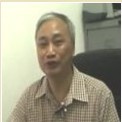
- Local knitting factories and knitting machinery factories in early post-war period
Au Kwan Cheung recalled that established before World War II and respectively producing the Chicks, 555 and Cicada singlet brands, the Chun Au, Chuen Sun and Lee Kung Man knitting factories were Hong Kong’s biggest brands at that time. As these were large-scale knitting factories which adopted a one-stop production mode, smaller squatter knitting factories had little chance of taking their orders. These long-established knitting factories imported high-quality cotton yarns from overseas and produced expensive knitted garments such as sweaters on old-type knitting equipment known as Granville Yankee machine. These factories seldom bought cloth from squatter factories to produce their brands. Most small local knitting factories only emerged after World War II.
Many manufacturers came to Hong Kong from Guangzhou where they had specialised in knitting mass market mid- and low-end fabrics. Ultimately, only the long-established large factories could supply high-quality fabrics. Au Kwan Cheung’s father and his business friends were amongst the first manufacturers to run knitting factories in Hong Kong. As knitting machines occupied a small space, a 1,000-square-foot plant could accommodate two or three machines. Since weaving factories needed much more space, they were seldom operated in home factory style but mainly by manufacturers from Shanghai.
Two notable early knitting machinery factories in Hong Kong were Fook Yuen and Tak Shing. Both of them were run by friends of Au Kwan Cheung’s father. Wah Luen and Wah Hing who came into the market at a later stage produced higher quality machines. Today, local machinery factories repair machines but no longer make them. In those days, most knitting masters began as apprentices because technical schools’ textile departments did not teach knitting technology. Au Kwan Cheung believed that one would find it easy to learn knitting technology but hard to be a skilled master as one needed to be a talent of machine.
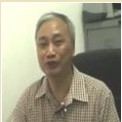
- Hong Kong knitting industry in the 1950s, Connection bewteen various departments of textiles indu...
Knitting factories in the 1950s mostly ran about 50-60 machines. With the local knitting industry taking off at that time, machines’ functions and outputs were constantly improving. Using only old-type machines, the squatter factory of Au Kwan Cheung’s father could barely produce 100 pounds or so of fabrics every 24 hours! Nowadays, modern knitting machines can produce over 1,000 pounds of fabrics within the same period of time! As old-type machines lacked automatic shut down function, they had to be deactivated manually. That was why the factories had to hire a worker to look after each machine. The old-type machine was found to be of inefficient, slow and labour intensive. For example, when a bundle of yarn thread was used up, it required someone to replace the empty bundle with a full one manually. If the machine went on knitting without one line of thread, the whole piece of fabric became defective. Au Kwan Cheung’s father focused on watching the old-type knitting machine he used in his squatter factory. Au Kwan Cheung’s mother helped by operating the yarn winding machine which fed small bundles of yarn threads into large twine balls so that Au Kwan Cheung’s father could replace the empty bundles with these twine balls on the knitting machines.
Having a small capital, squatter knitting factories could only invest in buying machines, but not raw materials. Their mode of business was to take up orders from garment factories to produce cloth from threads, with the garment factories providing them with the necessary cotton yarns when orders were placed. Hong Kong already had a cotton yarn supply in the 1950s with Hong Kong Spinners at Castle Peak Road being a well-known local cotton mill. Operating a cotton mill involved a large investment, and required a big plant. Due to their low purchasing volumes, small garment factories seldom buy yarns directly from the local cotton mills, but usually through melange yarn companies instead. Melange yarn companies were cotton mills’ agents which broke up large consignments of cotton yarns into smaller batches for sale. After procuring their cotton yarn, larger garment factories passed them to smaller knitting factories for processing. Au Kwan Cheung’s father's squatter factory produced knitted fabrics which could be used for sewing elastic garments such as sports shirts and T-shirts. Depending on the technique involved, fabrics were divided into two main types – knitted and woven. Woven fabrics, such as twill, shirt fabric, corduroy and denim, do not require knitting by needles and are not elastic. Knitting and weaving are ultimately distinct technical skills that require specific types of machines operated by different sets of mastery skills.
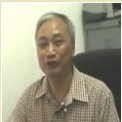
- Changes of geographical distribution of textiles industry: from Sham Shui Po to Tai Kok Tsui and ...
Sham Shui Po was a centre of HongKong's garment industry in these early years and was home to many knitting, dyeing and garment factories. This concentration of companies facilitated the circulation of raw materials and products. Knitting factories supplied fabrics to the garment factories in the district and would mostly deliver smaller orders of two or three bolts of cloth by bicycle. Larger orders of around 10 bolts required a tricycle for delivery. The same applied to deliveries to further-off areas such as Tai Kok Tsui. In the past, there were many dyeing factories in Golden Arcade, most of which later were relocated to Tai Kok Tsui and then to Castle Peak Road and Wing Hong Street near to Mei Foo. In those days, dyeing factories ran their businesses from ground level premises and operated by receiving orders from garment factories for processing. As dyeing factories had hot water supplies, Au Kwan Cheung often went to a neighbouring dyeing factory on Fuk Wah Street for a hot bath during the winter. He was of Primary Five and Six at that time.
Knitting and garment factories were more concentrated along Castle Peak Road. With the subsequent increase in their business, garment factories expanded in scale and gradually spread to Tsuen Wan and Kwai Chung. Following this expansion, knitting factories were moved out of residential premises and relocated to factory buildings for production. In the past, buildings on Fuk Wah Street were inhabited with both ordinary residents and manufacturing operators. When the government later enforced the fire safety regulations more stringently, factories were required to register and apply for operation licenses. The ground level premises of the buildings adjacent to the Au family’s home were all used as residences and changed to outlets or retail shops later on. Au Kwan Cheung’s father once had knitting factories at Sai Yeung Choi Street (near Wong Chuk Street’s Sham Shui Po section) and Fuk Wah Street. Both premises were operated on a “front-factory-back-dwelling” practice. When Au Kwan Cheung started his own business after growing up, his father's factory was inherited by the younger son. Remaining with the old style operation mode, Au remarked that the factory was not competitive and was finally closed in the 1980s.
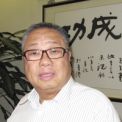
- Hong Kong delegates in international textile quota conferences
"Between the 1970s and 1980s, the Hong Kong government had sent delegates to sit in different international business conferences and negotiate with the European Union and USA on textile quotas. The delegates were headed by Deputy Director-General of Commerce and Industry Department, who was Chief Negotiator. In those years Director-General of Commerce and Industry Department was a senior official of the same rank as today’s department secretaries. Commerce and Industry Department answered to the three Secretaries of the Hong Kong government. Both the director and deputy-director posts were taken up by westerners. WK Chan was most impressed by Lawrence William Robert as a leader of the delegates. Lawrence William Robert was Chairman of TDC afterwards. WK Chan regarded Commerce and Industry Department as a cradle of senior officials. Many political stars were once deputy-directors of Commerce and Industry Department, for example, Donald Tsang, Regina Ip, John Tsang, Michael Sze and Chan Cho Chak. When Commerce and Industry Department went for negotiations, members of Textile Advisory Board (TAB) were also invited to the meetings to provide immediate advice. TAB members were appointed by the government. They came from both the industrial and commercial sectors as the quotas were allotted to trading companies and textile factories in equal halves. One of the more famous members of the commercial field was Lydia Selina Dunn, representative of the Swire Group. She later held office in Legislative Council and Executive Council. She even became a member of House of Lords, thanks to Mrs Thatcher, Prime Minister of the United Kingdom. Early TAB members representing the industrial field included YL Yang, Jack Tang, Henry Tang, SKChan, WK Chan, Francis Tien, James Tien, Christopher Cheng, John Chow, Lam Kan Shing, Kenneth Fang, William Fung, Frank Lin, Willy Lin, Andrew Leung, Stephen Cheong, Eleanor Wong and others. TAB was the first consultant body of Hong Kong’s industrial field. It had exerted a huge influence on government policies between the 1960s and 1970s. Quite a number of the then TAB members were now influential figures. WK Chan once represented the Macau government in quota conferences in the early period. The Macau delegates comprised of Susana Chou, Francis Tam, Sammy Liu, Victor Ng and others. They were now the upper class of Macau. Some of the representatives of Macau’s industries were recommended by trade unions while some were appointed by the government.
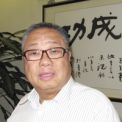
- Role played by Hong Kong representatives in international textile quota conferences
Textile quota conferences were convened by Asian export countries and European/US import countries. Official were sent for negotiations by different governments. Manufacturers from the export countries stood by to give advice. The negotiations were held between countries. The Hong Kong delegates played a leading role among the Asian countries. Many Hong Kong manufacturers had plants in Macau, Singapore, Malaysia, Thailand and other places. Their representatives of the textile industry were mostly Hong Kong manufacturers. The quota conferences were in one way a meeting of Hong Kong’s textile families. WK Chan exalted colonial Hong Kong’s senior officials as outstanding negotiators. Examples included Tony Miller, Chan Cho Chak, Chau Tak Hay, Donald Tsang, Yue Chung Yee, Regina Ip. The Hong Kong government stuck to Bilateral Negotiation principles and demanded the USA comply to the GATT rather than bullying the Asian countries with her power, or else she should resign from GATT. Hong Kong’s senior officials made themselves equal to the US part. They once successfully turned down a request from US companies to inspect the factories in Hong Kong. The manufacturers acted as consultants during the negotiations. Many Hong Kong manufacturers had plants outside Hong Kong and were a good source of information for the government. WK Chan had high praise on the open-mindedness of Hong Kong officials. They followed the mainstream when collecting opinions and so managed to execute the final plan. In retrospect of the rise of Hong Kong’s textile industry after the WWII, WK Chan deemed the key factor to be the Chinese political turmoil. It caused an influx of capitals, skills and labours into Hong Kong, which formed the foundation of Hong Kong’s prosperity when circumstances arose.
Copyright © 2012 Hong Kong Memory. All rights reserved.
| Set Name |





